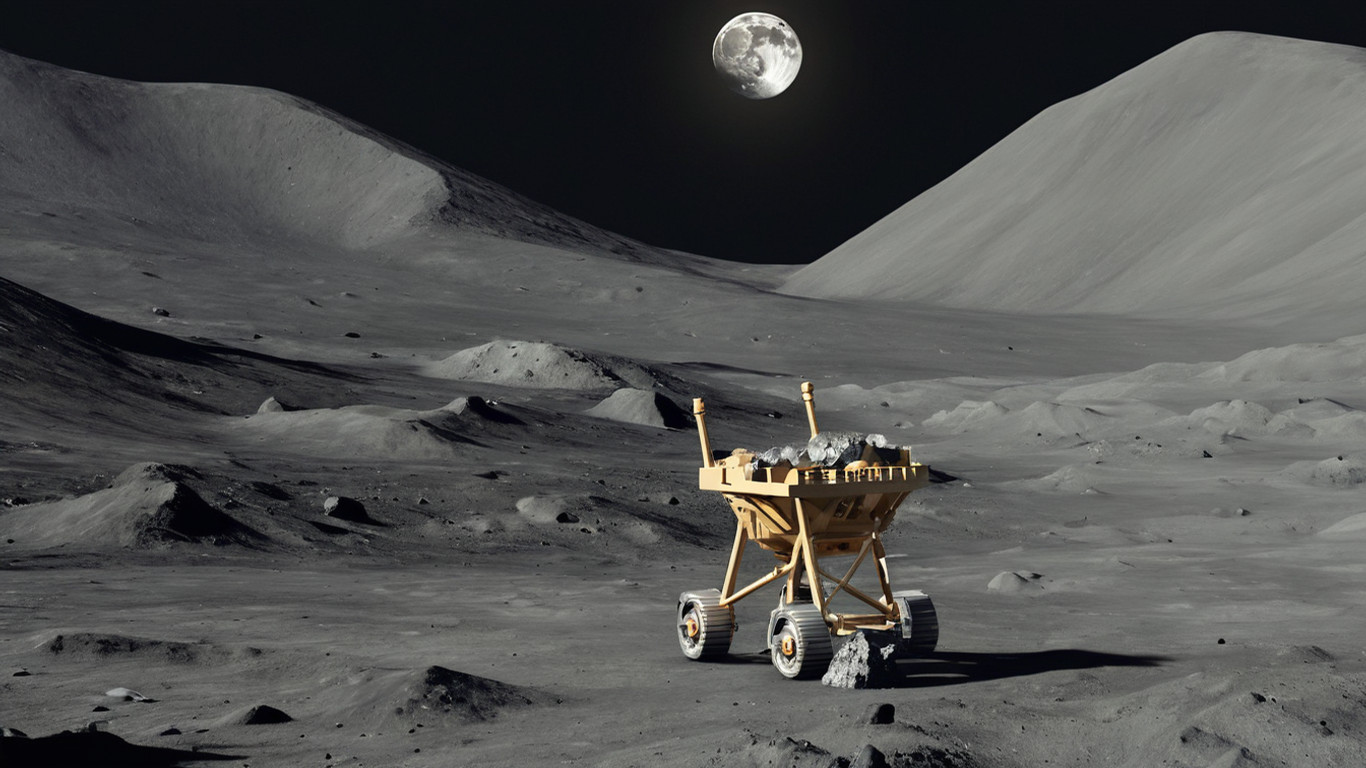Unlocking the treasures of the Moon, a commodity scarce on Earth yet crucial for fusion energy and various other applications, has been a long-envisioned endeavor. Recently, a private company has stepped forward to undertake the first steps in this monumental task.
Interlune, led by industry veterans Rob Meyerson and Gary Lai, both hailing from Blue Origin, the aerospace company founded by Jeff Bezos, has unveiled plans to mine helium on the lunar surface. Despite operating discreetly since 2022, Interlune has gained attention with its ambitious venture, supported by notable investors like Reddit co-founder Alexis Ohanian.
The company’s primary target is helium-3, an isotope vital for future fusion energy. Compared to the common helium found on Earth, helium-3 contains one less neutron, making it ideal for fusion reactions without producing radioactive by-products. While fusion energy remains a distant goal requiring extensive development, helium-3 presents a promising fuel source, potentially revolutionizing clean energy production.
Mining helium-3 entails numerous challenges, starting with lunar access. Though several private American companies have landed on the Moon, courtesy of NASA contracts, lunar mining represents a paradigm shift. Unlike previous lunar missions primarily serving scientific exploration, mining operations mark a commercialization of space activities.
The legal framework surrounding lunar mining remains ambiguous, governed by treaties like the Outer Space Treaty of the late 1960s. While no nation can claim sovereignty over the Moon, recent interpretations suggest that entities landing equipment on lunar soil could exercise jurisdiction over their activities, paving the way for mining ventures.
Interlune’s endeavors extend beyond helium-3 extraction, encompassing the potential mining of metals and water. These resources hold immense value, supporting future lunar habitats and space exploration missions, including NASA’s Artemis program, which aims to return humans to the Moon.
Despite the technical and logistical hurdles, Interlune remains undeterred, aiming to commence lunar operations by 2030. With innovative processing technologies and strategic partnerships with aerospace giants like SpaceX and Blue Origin, the company seeks to revolutionize space resource utilization.
As humanity ventures further into the cosmos, the quest for lunar resources epitomizes our relentless pursuit of progress. Interlune’s pioneering efforts herald a new era of space exploration, where the Moon transforms from a distant celestial body to a frontier of economic opportunity and scientific discovery.
Image is illustration only!
article source: index.hu
Rare Celestial Phenomenon Returns, Happens Only Once Every 80 Years
According to a statement from NASA, there is a chance once again to witness the super-bright celesti…
Pioneering Lunar Mining: First Private Space Mining Company Aims for Helium Extraction
Unlocking the treasures of the Moon, a commodity scarce on Earth yet crucial for fusion energy and v…
Exploring the Wonders of Exoplanets – Beyond Our Solar System
In the vast expanse of the cosmos, astronomers have uncovered a fascinating realm beyond our familia…


